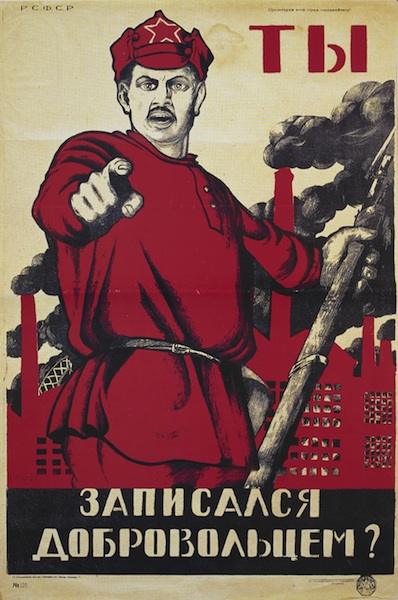I finally got the chance to visit the British Library’s exhibit Russian Revolution: Hope, Tragedy, Myths, one of several shows by cultural institutions attempting to cash in on the hundredth anniversary of the Russian Revolution. One of the previous exhibits at the Royal Academy, was criticised by various Leftist types, typically for excising Trotsky or misrepresenting the events of the October revolution. Personally, I would have preferred the Royal Academy been more explicit about their attempt to recreate the 1932 exhibition in Moscow, and put more effort into explaining what different pieces of art were and why they were important. Utterly extraordinary paintings and posters were displayed without context or background, merely the name of the artist (if known) and a catalogue number.
My hopes for the British Library were higher. While not an academic institution per se, I expected the British Library’s extraordinary archives would help to produce an illuminating exhibit on the Russian Revolution. Or at the very least a ton of early Soviet propaganda posters, as the image used in most promotional material suggests:
Instead, I got a muddled and confused exhibition that seemed to want to try doing many things at once, and as a consequence didn’t really do any of them. The exhibition assumed a reasonable amount of knowledge on the Russian Revolution, perhaps akin to having read the The Russian Revolution: A Very Short Introduction. At the very least, you would have to know the difference between the Mensheviks, Bolsheviks, Socialist Revolutionaries and Kadets,1 as well as basic details about figures like Kerensky, Lenin and Trotsky. Lenin got a brief biographical overview, accompanied by a letter he wrote requesting access to the British Museum reading room in 1902, but Trotsky and Kerensky (along with all other significant figures besides the Romanovs) got nothing. Not knowing much about the different people involved renders much of the exhibit mostly meaningless, yet the British Library did nothing to provide the necessary background. That would have been acceptable if the exhibition was aimed at Russian Revolution history buffs, but even they would largelly be dissapointed by it. There was a cursory section on the meaning and significance of the Russian Revolution today, but if the assumption is that exhibition attendees are familiar with the Russian Revolution, surely they would be aware that its significance extends beyond the books of Alexander Solzhenitsyn or the films of Sergei Eisenstein. The curation implied the Russian Revolution had lost all political significance – at least outside Russia – by the early 1930s. But that claim was not made explicit, and I have loved to have seen something – anything – on what impact, if any, the Russian Revolution had, and may still have, on politics more generally. Perhaps a museum exhibition is not the place to go for that discussion, but it remains dissapointing that the British Library shied away from it.
-
Political parties active in Russia in 1917. ↩︎
